Keeping budgies as pets can be a delightful experience, as these small and colorful birds are known for their charm and sociability. However, ensuring the well-being of budgies requires a comprehensive understanding of their behavior and needs.
This article aims to provide valuable insights into budgie care by focusing on keeping four budgies in a single cage. Is it possible to house multiple budgies together harmoniously? What considerations should be taken into account?
By addressing these questions and more, this article aims to equip budgie enthusiasts with the knowledge necessary to create a suitable and comfortable environment for their feathered friends.
Understanding the dynamics of multiple budgies sharing a cage can contribute to the well-being and happiness of these intelligent creatures, fostering a harmonious living arrangement for both the birds and their human companions.
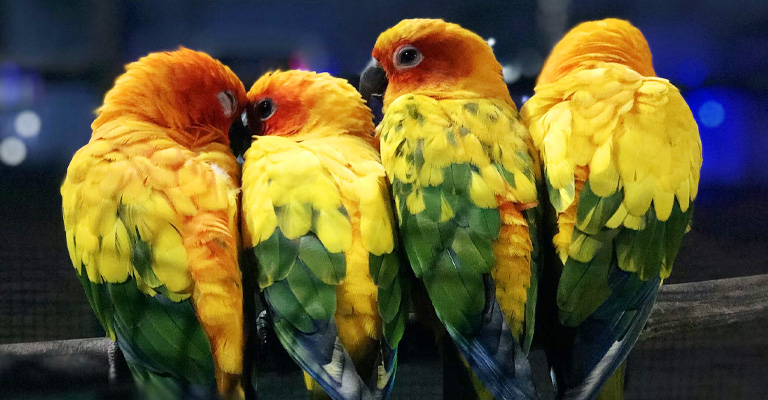
Understanding Budgie Behavior And Social Needs
Budgies, also known as parakeets, exhibit fascinating behavior patterns that stem from their instincts in the wild. In their native habitats, budgies form large flocks, where social interactions are crucial to their survival and well-being.
These friendly birds thrive in the company of their kind, displaying behaviors such as preening to each other, engaging in playful activities, and even sleeping close together for security.
The Natural Behavior Of Budgies In The Wild
Budgies are highly social creatures, living in large flocks in their native Australia. They communicate through chirping, singing, and various body language signals.
Their natural behaviors include flying together, foraging for food collectively, and engaging in social grooming.
Social Nature Of Budgies And Their Need For Companionship:
Budgies have a strong need for friendship and thrive when they have opportunities for social interaction. They form strong bonds with their flock mates, seeking comfort and security through socialization. Loneliness and isolation can lead to stress and behavioral issues in budgies.
Benefits Of Keeping Multiple Budgies Together:
Keeping multiple budgies in the same cage offers numerous advantages. Firstly, it provides the birds companionship and a sense of belonging, mimicking their natural flock environment.
Secondly, it promotes socialization, mental stimulation, and exercise. Budgies engage in playful activities, share their vocalizations, and even preen at each other, fostering a sense of well-being and contentment.
Factors To Consider Before Keeping Four Budgies In One Cage
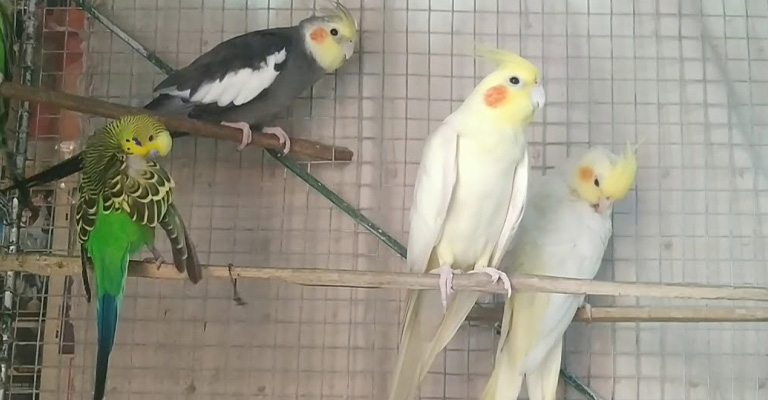
Housing multiple budgies in a single cage require careful consideration to ensure their well-being and compatibility. Several factors come into play when creating a suitable living environment for four budgies.
Space Requirements For A Budgie Cage
Budgies need ample space to fly and exercise. The cage should be large enough to accommodate multiple perches, toys, and feeding stations. Providing sufficient room for each budgie to move around comfortably is essential for their physical and mental health.
Cage Setup And Accessories
The cage should have appropriate accessories, such as perches of varying sizes, swings, and toys that encourage physical activity and mental stimulation. Creating a stimulating and enriching environment to prevent boredom and promote healthy behavior is crucial.
Compatibility Of Budgies
When housing multiple budgies together, their compatibility significantly affects their overall well-being. Gender, age, temperament, and personality should be considered.
- Gender considerations: Mixing genders may lead to breeding behaviors, so it’s often recommended to house budgies of the same gender or to have them spayed or neutered to prevent unwanted breeding.
- Age considerations: Introducing budgies of similar ages is generally more manageable, as they are more likely to adapt and form social bonds. Younger budgies are more receptive to companionship and integration with other birds.
- Temperament and personality matching: Observing the budgies’ temperaments and dispositions is crucial for harmonious coexistence. Birds with similar energy levels and social preferences are more likely to get along.
Cage Size And Design
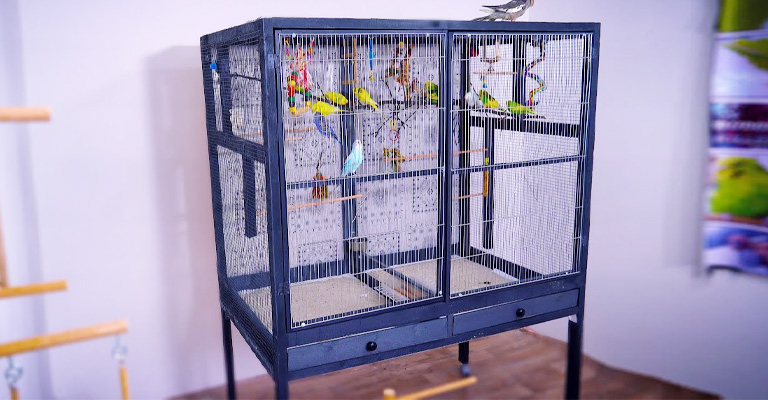
It is crucial to consider the appropriate cage size and design to provide a comfortable and stimulating environment for four budgies sharing a cage. Budgies are active birds that require sufficient space for exercise and exploration.
A cramped cage can lead to stress and behavioral issues. Opting for a cage with dimensions of at least 30 inches wide, 18 inches deep, and 18 inches high, allowing ample room for perching and movement is recommended.
Recommended Cage Dimensions For Four Budgies:
The cage should offer ample space for the birds to move freely and engage in natural behaviors like flying, hopping, and climbing.
Horizontal flying space is particularly vital as it enables the budgies to exercise their wings fully, promoting their physical health and overall well-being.
Importance Of Horizontal Flying Space:
Horizontal flight encourages healthy wing muscle development and prevents the risk of obesity resulting from limited movement. It also reduces stress and boredom, leading to a more content and friendly group of budgies.
Types Of Cages Suitable For Multiple Budgies:
Flight cages
Spacious, rectangular cages designed for birds’ horizontal movement are ideal for housing multiple budgies together. These cages often have multiple perches and ample space for toys and activities.
Aviaries
Larger enclosures that can be either indoor or outdoor provide a more natural environment for budgies to fly and explore. Aviaries allow for greater freedom of movement and can be an enriching living space for a group of budgies.
Custom-built cages
Tailor-made cages offer the advantage of being specifically designed to accommodate the unique needs of multiple budgies. Custom-built options can incorporate various levels, platforms, and play areas, enhancing the birds’ living experience.
Cage Setup And Accessories
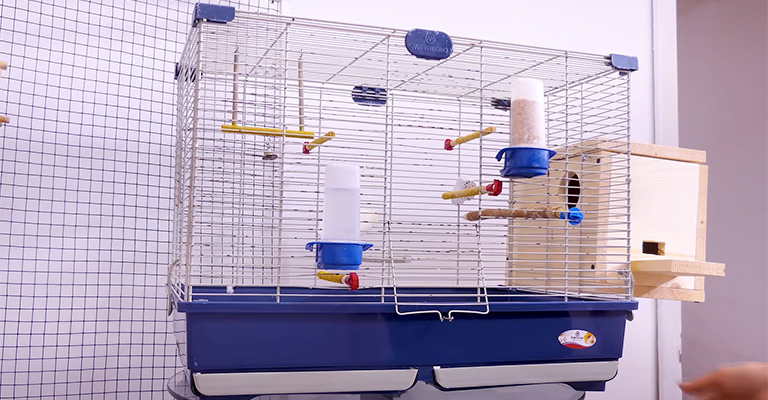
Creating an appropriate living environment for budgies involves careful consideration of cage setup and the inclusion of various accessories. Each element plays a crucial role in promoting their physical and mental well-being.
Perches And Branches
Provide a variety of perches of different thicknesses and textures to support proper foot health and exercise. Natural branches can be used, ensuring they are non-toxic and free of pesticides or chemicals.
Food And Water Containers
Use sturdy containers that are easy to clean and refill. Separate food and water dishes are recommended to prevent contamination and allow budgies easy access to both essentials.
Toys And Enrichment Items
Offer a range of toys to keep budgies mentally stimulated and engaged. These can include swings, bells, puzzle toys, and shreddable items. Rotate and introduce new toys periodically to prevent boredom.
Nesting Boxes And Breeding Considerations (If Applicable)
If breeding budgies are the goal, provide suitable nesting boxes that offer privacy and security. Research and understand the requirements for successful breeding and ensure proper monitoring and care.
Remember, a well-designed cage setup and thoughtful selection of accessories contribute to a budgie’s happiness and overall quality of life.
Feeding And Nutrition
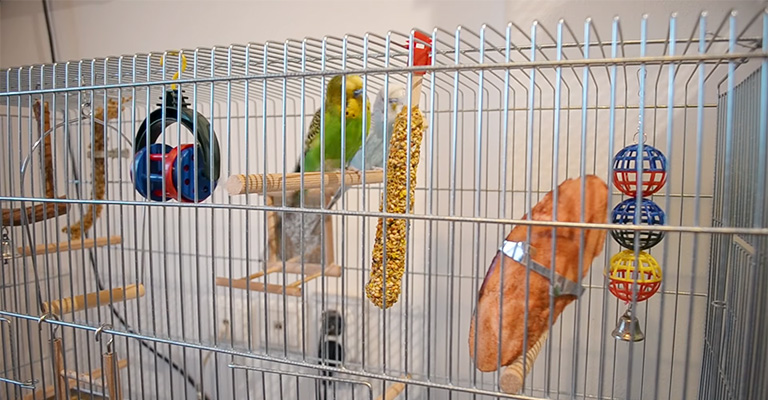
Proper nutrition is crucial for the health and well-being of budgies. This section will explore the dietary requirements of budgies, ensuring a balanced diet for multiple birds, and strategies for feeding them in a shared cage.
Budgie Dietary Requirements
Budgies need a diverse diet of fresh fruits, vegetables, high-quality pellets, and occasional treats. They require essential nutrients such as proteins, carbohydrates, fats, vitamins, and minerals to support their overall health and vitality.
Ensuring A Balanced Diet For Multiple Budgies
When keeping multiple budgies together, providing each bird with equal access to food is essential. Place various food bowls throughout the cage to prevent competition and ensure each bird has a fair chance to eat.
Strategies For Feeding Multiple Birds In One Cage
Establishing a feeding routine is beneficial to avoid disputes during mealtimes. Monitor the birds closely to observe their eating habits and address any signs of aggression or dominance. Consider using feeders with dividers to separate food and minimize conflicts.
Maintenance And Hygiene
Maintaining a clean and hygienic environment is crucial for the health and well-being of budgies. Regular cleaning and proper hygiene practices are essential to prevent the spread of diseases and ensure a comfortable living space for your feathered companions.
In this section, we will explore the daily cleaning routine, regular cage maintenance, deep cleaning, and measures to prevent the spread of diseases in a multi-budgie environment.
Daily Cleaning Routine
Remove droppings, uneaten food, and debris from the cage. Replace the newspaper lining the cage bottom and wipe down perches and toys with a mild bird-safe disinfectant. Refresh food and water containers, ensuring they are clean and contamination-free.
Regular Cage Maintenance And Deep Cleaning
Every few days, thoroughly clean the cage, including removing and washing perches, toys, and dishes. Scrub the cage bars, bottom tray, and other surfaces with a bird-safe disinfectant, rinsing well afterward. Allow everything to dry completely before reassembling the cage.
Preventing The Spread Of Diseases In A Multi-Budgie Environment
To minimize the risk of disease transmission, quarantine new budgies before introducing them to the existing flock.
Regularly monitor all budgies for signs of illness, such as changes in behavior, appetite, or droppings. Avoid sharing toys, perches, or food dishes between birds, as this can spread potential pathogens.
Potential Challenges And Solutions
Introducing multiple budgies into a shared cage can present challenges requiring careful consideration and proactive solutions. Addressing dominance and territorial behavior is crucial to maintain a harmonious environment.
Aggression and bullying among budgies can also arise, posing a risk to their well-being. Additionally, ensuring proper health care and veterinary attention is essential to prevent and manage any potential health issues that may arise.
Dominance And Territorial Behavior
Power and territorial disputes may occur when housing multiple budgies together. Budgies may engage in squabbles over perches, food, or personal space.
To address this, provide multiple feeding and drinking stations and a variety of perches and toys to reduce competition.
Observing their interactions closely and separating birds that display excessive aggression can help establish a more balanced social dynamic.
Aggression And Bullying:
Budgies, like any social animal, can sometimes exhibit aggressive behavior toward one another. Signs of aggression may include biting, chasing, or feather plucking. To mitigate this, ensure the cage is spacious enough to provide escape routes and hiding spots.
Introduce new budgies gradually and monitor their interactions closely. If persistent aggression occurs, consider providing separate cages for the birds’ safety and well-being.
Health Issues And Veterinary Care:
Multiple budgies in one cage can increase the risk of spreading health issues such as infections or diseases. Regularly cleaning and disinfecting the cage, providing a balanced diet, and ensuring fresh water is essential for maintaining their health.
Additionally, schedule routine veterinary check-ups to detect any potential health concerns early on and to receive guidance on proper nutrition, vaccinations, and preventive care tailored to the needs of your budgies.
Frequently Asked Questions
Budgies are naturally vocal birds, and keeping multiple budgies in one cage may increase the overall noise level. However, budgies tend to vocalize more when bored or seeking attention. By providing adequate stimulation and social interaction, you can minimize excessive noise.
Aggression can occur when budgies feel threatened or when there is a lack of space and resources. To prevent aggression, ensure the cage is large enough and offers plenty of perches, toys, and feeding stations. Additionally, monitor the birds’ behavior closely and separate any aggressive individuals if necessary.
It is generally best to house budgies of similar ages together. Younger birds are more adaptable and tend to establish stronger bonds. Suppose you introduce an older budgie to a group of younger ones. In that case, they may need to integrate and form a cohesive flock.
Yes, it is crucial to quarantine new budgies for at least 30 days before introducing them to your existing flock. Quarantine helps prevent the spread of diseases and allows you to monitor the new budgies’ health and behavior before introducing them to your other birds.
To encourage bonding and socialization, provide ample opportunities for the budgies to interact. Place perches, toys, and feeding stations in various locations within the cage to encourage movement and exploration. Spend time near the cage, talking to and interacting with the budgies. Offer treats as rewards for positive behavior and play gentle, soothing music to create a calming environment.
Conclusion
Keeping multiple budgies in one cage can be a rewarding experience for both the birds and their owners. You can create a harmonious flock of budgies by providing a spacious and enriched living environment, ensuring proper nutrition, and monitoring the birds’ behavior.
Remember to observe the social dynamics, address any signs of aggression, and promote bonding through positive interactions. With proper care and attention, your four budgies can live happily together, providing each other with companionship and entertainment.